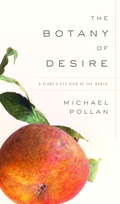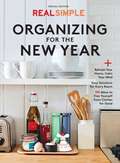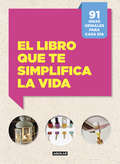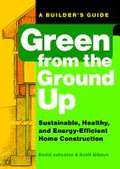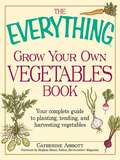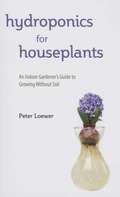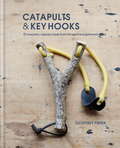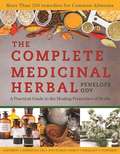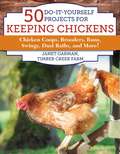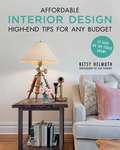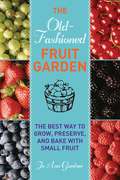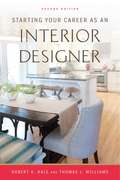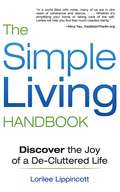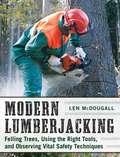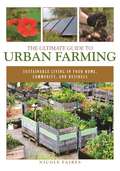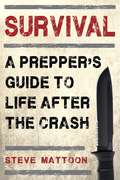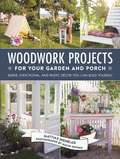- Table View
- List View
Cultivo de Maconha: O Guia para o Cultivo Indoor de Maconha para Uso Medicinal e Pessoal
by Hiddenstuff EntertainmentO melhor livro de referência e guia passo a passo para o cultivo de maconha. Aprenda a culivar cannabis seguindo instruções passo a passo. Aprenda e comece a cultivar em apenas algumas horas. Você irá produzir como um profissional usando as estratégias de cultivo mais efetivas. Inclui: -Projetando o seu Espaço de Cultivo -Iluminação -Ventilação -Como Monitorá-la -Ambientes de Cultivo -Recipientes -Nutrientes -Regando suas Plantas Economize tempo e dinheiro usando este super guia. --> Suba ao topo da página e adicione ao carrinho para comprar instantaneamente Aviso: O autor e/ou proprietário dos direitos autorais não faz afirmações, promessas ou garantias quanto a eficácia, completude ou adequação dos conteúdos deste livo e isenta-se de responsabilidade quanto a qualquer erro ou omissão de seu conteúdo. Este produto deve ser usado apenas como referência.
Microcasas: Una guía para vivir en viviendas pequeñas
by Nancy Ross Hugo TordoniMicrocasas: Una guía para vivir en viviendas pequeñas, de Nancy Ross ¿Quiere descubrir la forma fácil de diseñar su microcasa para vivir de una forma más simple? Ya sea que desee saber cómo construir o diseñar una microcasa, o decidir si esa es la decisión correcta para usted, este libro le será de ayuda. Esta es una vista previa de lo que usted aprenderá Los beneficios de las microcasas Maneras de financiar su microcasa Encontrar la ubicación perfecta Consejos simples para ahorrar espacio y vivir en una vivienda pequeña Ideas para la cocina Diseño de la estancia, baño, habitaciones Consejos para comprender la vida en las casas pequeñas ¡Y mucho, mucho más!
Marijuana: guida per principianti sulla coltivazione della marijuana
by Nancy Ross Marilena Martucci"Marijuana: guida per principianti sulla coltivazione della marijuana"è una quida valida, snella e molto precisa che accompagnerà il coltivatore inesperto a compiere i suoi primi passi verso la coltivazione della cannabis. Ogni argomento viene spiegato con linearità e nulla viene lasciato al caso. Una lettura affascinante anche solo per entrare in contatto con la coltivazione di una pianta che viene da molti considerato un tabù, ma che porta grandi benefici.
Plantación Y Cultivo De Marihuana: Guía De Horticultura De Marihuana Medicinal Y De Consumo Personal
by Hiddenstuff EntertainmentValiosa fuente de consulta para plantación y cultivo de marihuana. Aprenda y cultive cannabis con instrucciones simples y fáciles de seguir. Aplicando estrategias de cultivo efectivas, se volverá todo un profesional. El material incluye: - Preparar el espacio para cultivo. - Iluminación. - Aireación. - Monitoreo. - Entornos para cultivo. - Recipientes. - Nutrientes. - Riego.
The Botany of Desire: A Plant's-Eye View of the World
by Michael PollanThe book that helped make Michael Pollan, the New York Times bestselling author of Cooked and The Omnivore’s Dilemma, one of the most trusted food experts in AmericaIn 1637, one Dutchman paid as much for a single tulip bulb as the going price of a town house in Amsterdam. <P><P>Three and a half centuries later, Amsterdam is once again the mecca for people who care passionately about one particular plant—though this time the obsessions revolves around the intoxicating effects of marijuana rather than the visual beauty of the tulip. <P>How could flowers, of all things, become such objects of desire that they can drive men to financial ruin? <P>In The Botany of Desire, Michael Pollan argues that the answer lies at the heart of the intimately reciprocal relationship between people and plants. <P>In telling the stories of four familiar plant species that are deeply woven into the fabric of our lives, Pollan illustrates how they evolved to satisfy humankinds’s most basic yearnings—and by doing so made themselves indispensable. <P>For, just as we’ve benefited from these plants, the plants, in the grand co-evolutionary scheme that Pollan evokes so brilliantly, have done well by us <P>. The sweetness of apples, for example, induced the early Americans to spread the species, giving the tree a whole new continent in which to blossom. So who is really domesticating whom? <P>Weaving fascinating anecdotes and accessible science into gorgeous prose, Pollan takes us on an absorbing journey that will change the way we think about our place in nature.
Cold Climate HVAC 2018: Sustainable Buildings in Cold Climates (Springer Proceedings in Energy)
by Dennis Johansson Hans Bagge Åsa WahlströmThis volume presents the proceedings of the 9th Cold Climate HVAC conference, which was held in Kiruna, Sweden in 2018. The conference highlighted key technologies and processes that allow scientists, designers, engineers, manufacturers and other decision makers in cold climate regions to achieve good indoor environmental quality (IEQ) with a minimum use of energy and other resources. The conference addressed various technical, economic and social aspects of buildings and HVAC systems in new and renovated buildings. This proceedings volume gathers peer-reviewed papers by a diverse and international range of authors and showcases perspectives and practices in cold climate building design from around the globe. The following major aspects, which include both fundamental and theoretical research as well as applications and case studies, are covered: (1) Energy and power efficiency and low-energy buildings; (2) Renovating buildings; (3) Efficient HVAC components; (4) Heat pumps and geothermal systems; (5) Municipal and city energy systems; (6) Construction management; (7) Buildings in operation; (8) Building simulation; (9) Reference data; (10) Transdisciplinary connections and social aspects; (11) Indoor environments and health; (12) Moisture safety and water damage; (13) Codes, regulations, standards and policies; and (14) Other aspects of buildings in cold climates.
Real Simple Organizing in the New Year
by The Editors of Real SimpleReal Simple Magazine presents Organizing in the New Year.
El libro que te simplifica la vida
by Sandro Russo Letizia CafassoUn pequeño libro con grandes ideas para hacerte la vida más fácil. ¿Alguna vez has necesitado amplificar la señal de tu wi-fi y no has sabido cómo? ¿Sabes cómo puedes aprovechar hasta la última gota de los tubos de crema? ¿Es un engorro ponerte ese vestido con cremallera trasera porque nunca consigues abrochártelo sola? ¿Has tenido una cita que se ha ido al traste por no poder abrir una botella de vino o porque no estuviera suficientemente frío? ¿Has tenido que tirar tu CD favorito porque se había rallado? Para los despistados, para los caseros, para los que viven cada día sin pensárselo demasiado, para los ecológicos y para los manitas... Para resolver todas tus pequeñas crisis diarias con mucha imaginación y objetos que todos tenemos a mano, llega El libro que te simplifica la vida, un pequeño compendio de ideas fáciles y gratuitas para hacerte la vida más fácil en casa y en cualquier lugar.
Green From the Ground Up: Sustainable, Healthy, And Energy-Efficient Home Construction (Builder's Guide Ser.)
by David Johnston Scott GibsonMy passion for green building is based on experience. I know that building green results in better houses and that it improves the lives of the people who live in them, not to mention the health of our planet.
The Everything Grow Your Own Vegetables Book (The Everything®)
by Catherine Abbott Meghan ShinnVine-ripened tomatoes. Succulent squash. Plump cucumbers.Growing vegetables is a rewarding and cost-effective way to eat better for less. Yet many don't know where to start. Author and farmer Catherine Abbott answers questions like:What is the best way to maximize my garden space?How do I get started growing food to sustain my family?Can I grow vegetables inside my house?How can I tell if my vegetables are primed for eating?Will I really save money by growing my own? You will find affordable tips on how to plant and harvest more than thirty common vegetables, from spinach and eggplant to corn and beans. Abbott's expertise shines on planting, fertilizing, watering, weeding, and troubleshooting. This book has everything you need to grow fresh, delicious veggies in any climate, any time of year!
Green Living Book (The Everything )
by Diane Gow McDildaWant to learn more about organic food? Curious about alternative power sources? Want to do your part to help save the environment? The way that you live, work, travel, eat, drink, and dress affects the earth and the environment-and this concise, eye-opening book gives you all the tools you need to live a "green" lifestyle. The Everything Green Living Book shows you how to: Get involved in Earth Day through grassroots efforts or volunteering; Build or buy a green house; Use and select nontoxic cleaning supplies; Reap the benefits of organic foods; Utilize nonpollutant modes of transportation; Recycle more efficiently and find all-natural clothing and personal care items; Educate your children on the green lifestyle. This Earth-conscious manual is your introduction to the green lifestyle-so you can help the Earth prosper for another 4.5 billion years!
The Everything Organize Your Home Book (The Everything®)
by Jenny SchroedelAre you living in a cramped quarters with no space to breathe? Do you feel overwhelmed by all that clutter? Would you prefer to do it yourself than pay a professional organizer? Get ready to add order to your home—one room at a time! With The Everything Organize Your Home Book, 2nd Edition, you’ll learn how to: -Set up a home office anywhere -Maximize closet and shelf space -Discover alternative storage ideas -Sell what you no longer need or want -Combat kid and toy clutter -Organize the garage, attic, car, and outdoor areas This fully revised and updated second edition proves that you can live large in even the smallest of spaces—by making every square inch count!
Hydroponics for Houseplants: An Indoor Gardener's Guide to Growing Without Soil
by Peter LoewerPick your container, fill it with water, and sit back and watch your plant grow!This book is the answer to anyone who has ever shied away from growing house plants because of messy dirt or fear of things dying if left for a few days without water. Ditch the hassle and learn how to grow plants indoors with nothing but water.Peter Loewer, an inveterate inventor of water gardening techniques, has written and illustrated this charming guide to teach readers the basics of hydroculture. This technique of growing plants in water has a history of almost 300 years, from experiments by an English botanist to the giant automated factory greenhouses of the twentieth century where vegetables are now grown commercially by the ton. Learn how to utilize this simple, time-tested method in your own home and never worry about over- or under-watering again!Peter Loewer, an inveterate inventor of water gardening techniques, has written and illustrated this charming guide to teach readers the basics of hydroculture. This technique of growing plants in water has a history of almost 300 years, from experiments by an English botanist to the giant automated factory greenhouses of the twentieth century where vegetables are now grown commercially by the ton. Learn how to utilize this simple, time-tested method in your own home and never worry about over- or under-watering again!
Catapults & Key Hooks: Everyday objects made from foraged and gathered wood
by Geoffrey FisherWhether building a bee hotel to help your garden's ecosystem thrive, crafting a catapult, whistle, skipping rope or cup and ball game to give away, or making a key hook or cobweb brush to organise your home, the result of each will be entirely unique while also effortlessly stylish.All basic woodworking techniques are covered, plus Geoffrey also shows how best to prepare materials, including checking for disease, drying and stripping bark, and gives a detailed guide on your essential tool kit - what to have, how to handle your tools safely and how to maintain everything to the highest standard -meaning anyone can pick up Catapults & Key Hooks and dive straight into the world of Geoffrey's designs.
The Complete Medicinal Herbal: A Practical Guide to the Healing Properties of Herbs
by Penelope OdyComplete Medicinal Herbal is a fully illustrated practical guide to the healing properties of herbs. The book includes more than 120 medicinal herbs with important therapeutic properties and a section on their historical uses, The Complete Medicinal Herbal is a must for every home book shelve. All the parts of the plants that can be used medicinally are shown, from fresh flower petals or leaves to the root, bark, and juice. Each entry details the plant's chemical constituents, its actions, and its therapeutic applications-from exotic ma huang, used in China to treat asthma for 5,000 years, to humble cabbage, which has been effective against stomach ulcers in clinical tests. A special how-to section explains the preparation of herbal remedies. There are more than 250 safe treatments to help alleviate common complaints-from ordinary coughs, colds, and headaches to special treatments for skin conditions, digestive problems, and children's illnesses - even detailed lists of herbs for the elderly.
50 Do-It-Yourself Projects for Keeping Chickens: Chicken Coops, Brooders, Runs, Swings, Dust Baths, and More!
by Janet GarmanGet ready to jump into the world of chickens, one DIY project at a time. Owning and raising chickens doesn’t have to be an expensive hobby. With imagination, simple tools, and salvaged or bargain materials, you can make everything your flock needs for their health and safety.Buying a chicken coop can be a major expense. Follow the steps provided in the book to retro fit an existing structure into a chicken palace fit for the fanciest hens. Brooders, grow out pens, and chicken runs can easily be pulled together and give your feathered family a safe place to scratch and peck.If your chickens want fun activities, create boredom busters with the directions for a chicken swing, dust bath, outdoor roosts, front porches, and resting perches. Are you planning to raise your own sustainable flock? Building a nesting box area fit for the best broody is included. You can even set up a maternity ward and brooder pen in the coop. Dropping boards to dust baths, feeding stations to first aid, read and learn the simplest ways to provide the infrastructure and fun that your chickens need to grow and thrive. After all the project building, and chores are done, treat your flock to a delicious seasonal recipe with one of the recipes included.From beak to talon, you’re ready to tackle the needs of your flock with 50 DIY Projects you can create on a limited budget. Let’s get started!
Affordable Interior Design: High-End Tips for Any Budget
by Betsy Helmuth Dov PlawskyLive in luxury—on a budget. Homeowners and renters of all means dream of having a beautiful home. The media makes it look so easy, but many of us have less to work with and still long to live in style. Affordable Interior Design makes luxury an affordable reality. In this DIY home decorating handbook, Helmuth reveals insider tips and her tried-and-tested methods for choosing colors, creating a gallery wall, how to use accent tables, entry benches, rugs, and more! Helmuth has shared her affordable design advice and step-by-step approaches with millions through live teaching workshops, guest columns, television appearances, and interviews. Now, she has distilled her expertise into this practical guide. The chapters follow her secret design formula and include creating a design budget, mapping out floor plans, selecting a color palette, and accessorizing like a stylist. It’s time to start living in the home of your dreams without maxing out your credit cards. Learn how with Affordable Interior Design!
Old-Fashioned Fruit Garden: The Best Way to Grow, Preserve, and Bake with Small Fruit
by Jo Ann GardnerJo Ann Gardner and her husband, Jigs, have been farming for nearly four decades, specializing in fruit, dairy, and herb products. Jo Ann herself makes and sells seventy-five cases of jams, jellies, and preserves a year. She knows her subject well-and this breezy, delightful reissue of her classic text is a testament to the continued relevance of her years of gardening knowledge. Whether an old hand or a novice, you'll find The Old-Fashioned Fruit Garden enlightening and informative, not to mention enjoyable. In this updated and full-color edition of The Old-Fashioned Fruit Garden, Jo Ann takes you back to the basics.
The Prepper's Pocket Companion: How to Prepare for the End of the World as We Know It
by Kate RowinskiMost people don't believe they will ever have to face a real disaster, or are too scared to look ahead and quickly dismiss any thoughts of a future catastrophe. But a cataclysm can happen in an instant and without warning, and you won't be able to save yourself if you are not prepared. The Prepper's Pocket Companion shows you what to do before, during, and after any disaster, whether big or small. With ten easy steps, you'll learn the basics of: -Creating a foolproof plan -Storing water and food -Cooking off the grid -Alternative energy sources -Various disasters you may encounter -Short-term and long-term self-sufficiency -Safe and fast evacuation -And much more With this handy and instructive guide, you will learn how to protect yourself, your family, neighbors, and pets and be completely ready to face any disaster that may strike.
Starting Your Career as an Interior Designer (Starting Your Career Ser.)
by Robert K. Hale Thomas L. WilliamsStarting Your Career as an Interior Designer contains all the necessary tools and strategies to successfully launch and grow a professional design business in the competitive world of interior design. Drawing on the authors' extensive experience, this book includes case studies, and personal anecdotes that help teach you how to: Choose a design field Obtain and keep clients Garner referrals Market and position your business Bid competitively on projects Manage sales Organize a budget Manage start-up costs and cash flow Promote your business Branch out into product and architectural design Design within a retail environment Set pricing guidelines Sell to your target demographic Set up your officeReaders will find a history of the business side of interior design as well as various career tracks available to today’s budding entrepreneur. This updated second edition also examines the current state of the interior design industry, and what's in store for the future of firms. Any early career interior designer or student looking for practical advice on the ins and outs of running a design firm will need this one-stop guide.Allworth Press, an imprint of Skyhorse Publishing, publishes a broad range of books on the visual and performing arts, with emphasis on the business of art. Our titles cover subjects such as graphic design, theater, branding, fine art, photography, interior design, writing, acting, film, how to start careers, business and legal forms, business practices, and more. While we don't aspire to publish a New York Times bestseller or a national bestseller, we are deeply committed to quality books that help creative professionals succeed and thrive. We often publish in areas overlooked by other publishers and welcome the author whose expertise can help our audience of readers.
The Simple Living Handbook: Discover the Joy of a De-Cluttered Life
by Lorilee LippincottWhere did all this stuff come from? I don't have time for a life. I need to get away! Ever feel this way? Society is quick to fill our minds and homes with all the latest gadgets, tools, obligations, and entertainment, but what happens when it all doesn't fit? The Simple Living Handbook is a how-to memoir about creating a life that has space for what really matters to you.Lippincott's road to simplicity started in the fall of 2010 when she was on the verge of a breakdown. Her life was basically "normal"--husband, two kids, comfortable home, three home businesses--but she felt like she was running a rat race. She was desperate for more time and space to focus on family, health, and her own interests. So she and her husband decided to cut back on clutter--drastically. Now the family of four lives in a one-bedroom apartment with only the possessions they actually need and use; they stick to a simple diet of only whole foods "that God would recognize"; and they have managed to become productive without feeling busy. They've never been happier or healthier.Through personal stories, advice, and tips, Lippincott teaches how to make the hard decisions necessary to simplify your home and your schedule. Beyond that, she addresses the hidden emotional hoarding that threatens to keep our souls running in circles. Through her inspiring story, readers will learn to take a step back, reassess priorities, and commit to making space for those people and things that really matter.
Modern Lumberjacking: Felling Trees, Using the Right Tools, and Observing Vital Safety Techniques
by Len McDougallTimber! Learn how to wield a chainsaw safely-and other lumberjacking skills.While the lumberjack look may be trending among the fashion-forward crowd, lumberjacking is a useful real-world skill. An amateur with a chainsaw or an ax is dangerous to both people and property. Fortunately, experienced woodsman and outdoor writer Len McDougall shares his thorough knowledge of how to fell trees the right way-safely-with the use of a chainsaw, handsaw, hatchet, and ax in Modern Lumberjacking.In addition to providing tips for bringing trees down, he also includes information on:Wood identificationHow to buck logs properlyHow to stack and age logsLumberjacking knotsAnd more!Because safety is a priority, McDougall provides color photos and detailed line drawings throughout to carefully illustrate his instructions and make his advice easy to follow. Modern Lumberjacking is the perfect resource for do-it-yourselfers, landowners, and outdoor enthusiasts who want to fell trees safely and protect themselves and their property.Skyhorse Publishing, as well as our Sports Publishing imprint, is proud to publish a broad range of books for readers interested in sports-books about baseball, pro football, college football, pro and college basketball, hockey, or soccer, we have a book about your sport or your team.In addition to books on popular team sports, we also publish books for a wide variety of athletes and sports enthusiasts, including books on running, cycling, horseback riding, swimming, tennis, martial arts, golf, camping, hiking, aviation, boating, and so much more. While not every title we publish becomes a New York Times bestseller or a national bestseller, we are committed to publishing books on subjects that are sometimes overlooked by other publishers and to authors whose work might not otherwise find a home.
The Ultimate Guide to Urban Farming: Sustainable Living in Your Home, Community, and Business
by Nicole FairesHow to maximize your food production in an urban environment.The idea of bringing agriculture into the city has been promoted by many on both sides of the political fence: proponents of sustainability and prevention of climate change as well as those who worry about government and social instability. To address the urgent need for a shift in the way our food is produced, The Ultimate Guide to Urban Farming offers a practical education in everything there is to know about city agriculture: how to grow a lot of food in any kind of urban living situation, from apartment to full-scale commercial venture.Subjects covered include: Small scale vs. large scale agriculture The economic, social, health, and environmental impacts of urban farming Making the most of the space available The latest technologies and developments in agriculture, including: hydroponics, vertical gardening, and aquaponics Case studies and design concerns for community-based farming The best plant species for cities and seasons Beekeeping and small animals Commercial agriculture and the business side of farming in a city environmentThis comprehensive guide will introduce readers to the rewarding possibilities of growing their own food, as well as dispel the falsehood that says we need faraway factory farms to produce everything we eat.
Survival: A Prepper?s Guide to Life after the Crash
by Steve MattoonDefend what’s yours when catastrophe strikes with expert tips that go beyond food and water storage.Should a national disaster occur, how will you respond? What will occur when critical societal services cease to function? As a prepper, you will likely be ready to hole up and live off of your stored supplies, at least for a while. But what do you do during that time? What are your next steps? And how do you defend yourself against others who have not prepared for such a disaster?After the Crash covers all the situations that you may face when the lack of governmental infrastructure leads to social upheaval and chaos. Since most of the population is unprepared for a disaster of any kind, this book gives both the trained and untrained prepper valuable information needed to have any chance of survival in a world where organized government assistance may not be available. Importantly, he details the crucial steps you need to take in addition to doing everything other survival manuals advise. These critical tips go beyond stockpiling food, water, and weapons.Offering battle-proven advice, Steve Mattoon explores what it takes to survive alone versus in groups, each approach presenting its own advantages and challenges. Discover how best to defend yourself, what to use, and how to most effectively use the tools you have at your disposal. Whether you find yourself in a rural area or an urban jungle, Steve Mattoon’s After the Crash will prove an essential addition to any prepper’s bug-out bag.
Woodwork Projects for Your Garden and Porch: Simple, Functional, and Rustic Décor You Can Build Yourself
by Malin Nuhma Mattias WenbladGive your garden a unique, do-it-yourself charm with practical and decorative woodwork projects.Do you have a bare, uninspired garden or porch? Instead of overhauling and reconstructing the entire design, simply transform it with twenty-six essential and practical woodwork projects that will provide your home with a dash of DIY, rustic charm.These easy, fun, and attractive wood creations are accompanied by clear, step-by-step instructions and photographs and are divided into projects for planting and growing and for socializing and relaxing, as well as fun items for children. Woodwork Projects for Your Garden and Porch will have you making elegant, yet functional, pieces, such as: Benches and long tables Swings and trellises Flower boxes and driftwood shelves A mini outdoor kitchen and greenhouse And many more!Invest energy and love into your garden and porch and turn it into a personal oasis where you can unwind with a cup of coffee and a book, work on your gardening, or play games with the kids using the wooden pieces you have constructed with your own hands.




